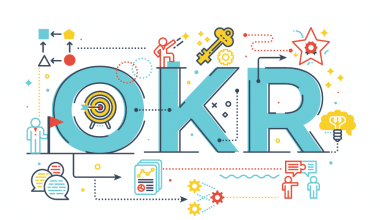Restaurant365 is used by many restaurant chains as an all-in-one accounting, employee scheduling, and inventory management software solution. Its true strength is its accounting module, which centralizes financial information for restaurant groups in order to provide a more comprehensive perspective of operations and profitability. Because the software is considered to be expensive, it’s a good idea to complete your homework before purchasing it. Here, we’ll go over the platform’s features and integrations in depth.
What is Restaurant365?
Restaurant365 is a cloud-based, all-in-one restaurant management platform that includes accounting, inventory management, and scheduling software. The bundle is an excellent solution for both new and established small eateries. It is especially useful for restaurant owners with business knowledge who can fully utilize its cost control features.
While Restaurant365 is more expensive than competing accounting software, its ability to centralize restaurant data from several sources is unparalleled. The system can link more than 70 major point-of-sale systems, allowing for a smooth data transfer between front-of-house and back-of-house. Any strategy can also include payroll and human resources operations.
Who Uses Restaurant365?
R365 is used by both new and experienced restaurant businesses because of its excellent accounting and cost management features. It’s a wonderful option if you’re searching for a restaurant management solution that takes finance and operations into account.
However, the program lacks waitlist and reservation management tools and modules. If you want to improve online reservations and the guest experience, you could look towards OpenTable or SevenRooms instead.
We should also mention that if you intend to organize private dining parties or events for groups of more than ten people at your restaurant, Perfect Venue is a good place to start. It’s a robust event management platform that works in tandem with Restaurant365 and many other top restaurant software systems.
Generally, it’s a one-stop event management application that automates your event-related chores. In seconds, you can optimize your event calendar and create professional-looking documents such as BEOs.
How does Restaurant365 Work?
When restaurant owners initially log in to Restaurant365, a setup assistant will walk them through the first setup process, allowing them to create location groupings, interface with the POS system, set up vendor information, and import their general ledger.
Administrators can then grant managers and accountants access to different dashboards and information based on their function and location. Charts on average daily sales comparisons, menu mixtures, cash over or short, and other metrics are available in the administrator view. The left-hand sidebar menu serves as a digital filing cabinet for administration and accounting information, with tabs for accounts payable and receivable, transactions, and fixed assets. To log new items, use the menu that runs across the top of the dashboard. You can use it, for example, to add a new employee or vendor to the system.
Invoicing, scheduling, inventory management, reports, and waste records are all accessible via the general manager page. The display can be tailored to individual users. For example, scheduling managers can be configured to land straight on the scheduler when they log in.
Restaurant365 Features
The platform includes modules and connectors to help restaurants with inventory management, accounting, personnel scheduling, payroll, and human resources. Here are some of the features:
#1. Accounting
The program offers a restaurant-specific accounting solution that connects seamlessly with POS systems, food and beverage vendors, payroll providers, and banks. There is also a beneficial tool for automating a restaurant’s account payable processes.
If your restaurant group is a franchise, the software supports all franchise operations and royalties as well as automated franchisee billing.
#2. Inventory
With digital accounts, ordering tools, and linked invoicing, Restaurant365’s inventory management system allows businesses to control costs. To manage operations, there is a commissary tool for ordering and fulfillment, as well as a catering inventory tool.
#3. Workforce and Scheduling
You can design staff schedules based on sales estimates using the employee scheduling tool. This is useful for controlling labor costs and ensuring that they are optimized. However, getting it right might be difficult.
The manager logbook function of Restaurant365 includes daily sales data and employee activities, as well as serving as a database for storing crucial restaurant papers.
#4. Payroll and human resources
Most other restaurant management solutions solely focus on operations, therefore this is possibly Restaurant365’s most unique aspect. You may hire, onboard, pay, and assist your workforce using the HR and payroll functions.
To aid in recruitment, a restaurant-specific application monitoring and onboarding system is available.
#5. Reporting
As previously stated, Restaurant365 is more than just an operational management solution. It integrates business finances to aid decision-making. A financial reporting function is included in the platform to assist eateries in visualizing and understanding their financial health.
A restaurant analytics dashboard is included for easy access to business intelligence. A real-time operational reporting tool monitors the restaurant’s operational performance and improves data-driven decision-making.
The food expenditure tracking function is possibly the most intriguing element here. You may automate the entire tracking procedure and compare it to your projected food prices. This is an effective method for identifying and addressing flaws in the food price strategy.
#6. Mobile Application
The platform includes a mobile app that allows you to access your R365 features and data from any location. This is a useful feature for restaurant owners and managers who wish to monitor their business’s success in real time even when they are not present.
#7. Capital
Another feature worth mentioning is the loan platform powered by Restaurant365 in collaboration with Lendio. You can utilize the platform to contact with skilled loan specialists and apply for restaurant capital finance.
Benefits of Restaurant365
#1. Cost-cutting measures
Smart Ordering: Based on past data, this feature indicates how much of each item should be ordered. If such figures are correct, managers can save time by having the software’s “purchasing assistant” generate purchase orders automatically.
To better control food prices, the system will estimate how much of a specific menu item should be cooked based on inventory and recipe data.
Smart Labor: Based on hourly sales data, this technology anticipates how many personnel are needed at specific periods of the day.
Menu engineering: The inventory management software in the system creates graphs that allow managers to compare specific menu items based on popularity and profitability. Restaurants can use this data to prioritize higher-margin goods.
Recipe costing: To provide more accurate recipe prices across the board, the recipe costing function analyzes how much of a specific component is used in each menu item. This data can also help restaurants find opportunities to enhance efficiency and reduce food waste by comparing actual against theoretical expenses.
Reporting: Restaurant365 features over 300 report templates that may be run and emailed automatically on a preset schedule. Managers can also compare actual and theoretical food expenditures by location, food category, or ingredient.
#2. Integrations
POS: Restaurant365 interfaces directly with over 70 POS choices, including restaurant POS systems such as Toast and Aloha, to provide a consistent flow of information between the front-of-house, back-of-house, and accounting teams. The platform collects data from the POS system, such as sales tickets, payment kinds, and attendance information, and provides a daily sales report automatically. The data is then translated into balanced journal entries for both labor and sales.
Vendors: Restaurant365 integrates with over 60 vendors directly. The platform receives electronic bills from these vendors and uses them to update raw ingredient inventory and make balanced journal entries.
#3. Inventory control
Keeping track of food items from the time they arrive at your door to the time they are served is a demanding operation with significant ramifications for a restaurant’s profit margins. When Restaurant365 receives invoices, it instantly connects each vendor item to its appropriate account and adjusts inventory. Managers can update the count through tablet or mobile device as those items are used up in the kitchen.
#4. Specifically designed for restaurants
Restaurant365’s level of specialty is what distinguishes it from other accounting software. The accounting program can manage tips as well as various locations in addition to recipe costing. Its scheduling software also allows employees to examine their schedules and switch shifts via the app.
Drawbacks
Cost
Restaurant365 is pricey, with options starting at $289 a month. Only the $399 per month Essential plan and the $489 per month Professional plan have useful features like recipe costing. Though some of these cost-cutting technologies are included in the $289 monthly Core Operations package, accounting software is not. The $289 monthly plans include either inventory management software or accounting or scheduling software, but not both.
While businesses can utilize QuickBooks Online or Xero, which have base plan pricing caps of $200 and $65 per month, respectively, these accounting software programs aren’t designed exclusively for the restaurant industry. Additional inventory management and scheduling tools, as well as integrations, may be required. If you’re undecided, compare the cost of putting together a restaurant operations software package from a la carte goods with employing an all-in-one platform like Restaurant365.
Available Integrations
One of Restaurant365’s strong qualities is integration. Because the program is intended to be all-in-one, it integrates with a variety of different software solutions in four major areas.
These are some examples:
- Inventory and accounting modules communicate with the vendors of a restaurant.
- Accounting, payroll, and human resources modules communicate with a restaurant’s bank.
- HR and scheduling modules are linked to the POS system.
- The scheduling and inventory modules employ an open API to communicate with nearly any system or platform.
R365 Connect
Restaurant365 Connect serves as the platform’s software integration point. Through this platform, the program can link to POS systems, banks, and vendors, allowing for easy data transfer.
R365 also includes an open API that allows you to integrate your applications with nearly any other relevant system or platform.
R365, as previously stated, has direct connections with over 70 POS systems. The platform uses data from your POS system, such as sales tickets and payment types, to generate reports and aid in real-time decision-making.
Integrations with major restaurant and food vendors are also available. You can use this tool to automatically import vendor invoices into the system, which will help you update actual food costs and inventories.
To import all banking activity into the system, connect the platform to your business bank account. This enables you to use the software to automate accounts payable, bank reconciliation, pay vendors via Restaurant365, record daily deposits, and other tasks.
Restaurant365 Pricing
Restaurant365 offers four subscription plans that can be paid quarterly or annually, with the latter receiving a 10% discount. The plans are designed so that you only pay for the modules that you require. They also make it simple to scale the program as your restaurant expands.
However, as you shall see, the pricing plans are not inexpensive. The following is a breakdown of Restaurant365’s annual pricing:
Inventory, Scheduling, AP Capture, and POS Connect are available for $289 per site each month.
Core Accounting is $289 per site per month and includes Inventory, Accounting, AP Automation, and POS Connect. Essential Accounting is $399 per location per month and includes Inventory, Scheduling, Accounting, AP Automation, and POS Connect. Manager Logbook Professional @ $489 per location/month: Inventory, Scheduling, Accounting, AP Automation, Everything in Essential, Custom Financial Reports, Fixed Assets, Business Analytics
What Does Restaurant365 Do?
The R365 platform streamlines restaurant management by helping businesses to regulate food expenses and optimize labor expenditures.
Who is Restaurant365 Owned By?
Tony Smith, Morgan Harris, and John Moody launched Restaurant365.
How Many Restaurants Use Restaurant365?
Customers include small businesses, franchises and chains, and accounting firms that work with restaurants. The company’s software is currently used in around 40,000 locations.
In Conclusion
The Restaurant365 software provides businesses with a fair amount of capability. Access to real-time financial data from restaurants in multiple locations simplifies operations. Forecasting tools, inventory management, and accounting linkages are all outstanding. Furthermore, POS linkages make it easier to optimize both front and back-of-house processes.
However, Restaurant365 is costly, and some establishments may still desire additional features and functions. Finally, whether or not you purchase R365 will be determined by your business objectives. If you’re looking for a robust accounting, POS, and invoicing solution, R365 might be a good fit.
Related Articles
- RESTAURANT MANAGEMENT SYSTEM: Guide to Effective Restaurant Management
- How Much Do Restaurant Owners Make: Restaurant Owner Salary in 2023
- How To Open A Restaurant In 2023: Free Tips on How to Open It with No Money
- RESTAURANT MARKETING: What You Should Know and Strategies






